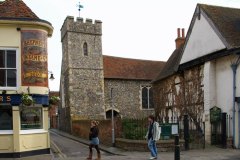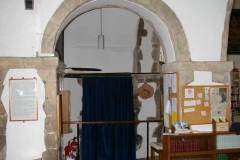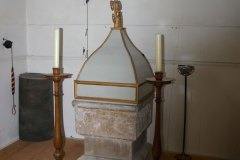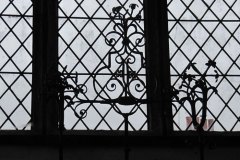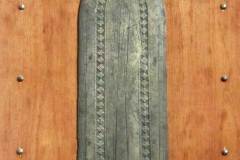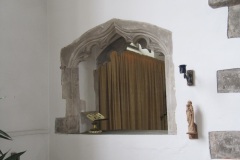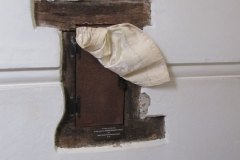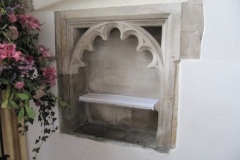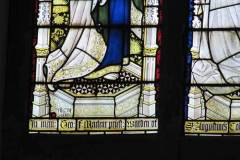St Peter’s Lane
St Peter’s church is the only one of six Canterbury medieval churches lying on the main city thoroughfare (Westgate to St George’s gate) to have survived for parish worship. The others (Holy Cross, All Saints, St Mary Bredman, St Andrews and St George’s) have all been removed to assist traffic flow, incorporated into new retail developments, converted to secular use or lost to enemy bombing in World War II. The position of St Peter’s parish church (not to be confused with the nearby St Peter’s Methodist Church) is odd – set back from the highway and tucked away behind retail shops which stand directly on St Peter’s Street (Image 1). This location lies on the line of the original Roman road leading from the Westgate, suggesting a possible religious use for the site from early times. The building includes examples of materials and styles reflecting 1000 years of worship here – specific examples are listed below. Specialists have not agreed on the dating of some elements, but in general terms the original 12th century tower and nave were enlarged first with a 13th century sanctuary, followed by the wide north aisle in the early 14th century and the narrower south aisle in the later 14th century. A major refurbishment in 1882 included addition of a parish hall. From 1660 until recent years, the church was used for the annual service to mark the appointment of a new mayor – hence the need for a mace holder (more below). St Peter’s closed for parish worship in 1928 but Sunday services resumed in 1953. The City Centre parish currently comprises St Peter’s, St Mildred’s and St Dunstan’s churches.
What to see:
- Several red Roman tiles can be spotted amongst the flint work of the slim Norman tower
- Large white quoin stones mark the corners of the tower – a mix of re-used Roman blocks and added ragstone
- A single round 12th century Norman arch survives under the eastern face of the tower (Image 2)
- The font (Image 3) dates from around 1200, has a square bowl and is carved from Bethersden marble – the 17th century font cover is currently kept on the floor nearby but its winding mechanism (an iron crane) of a similar date remains place
- The original door hooks are also in place, whilst the late 17th century mace holder currently stands, hard to spot, high on a window ledge (Image 4)
- Two brass plates may be on interest. On the north wall, the memorial to William Lovelle, rector of St George’s in the 1430s, provides interesting detail of ecclesiastical dress of the period (Image 5) but has had a chequered existence: rescued from St George’s church after the bombing of 1942, removed to the Cathedral Library for safe keeping, remounted in St Peter’s church, taken to Whitstable for a few days in January 1978 to improve its fixings, suffered minor damage in the storms and floods that month, cleaned up and returned to St Peter’s. A second brass, also on the north wall, includes several French names, reminding us of Huguenot religious refugees whose descendants were buried here in the 17th and 18th centuries.
- Near the high altar, note: an Easter sepulchre, a recess used to keep the host and altar crucifix during Easter time under its ogee arch (Image 6); the simple aumbry, a small cupboard used to store chalices and the sacrament (Image 7); and the less common double piscina (Image 8) used to wash hands and communion vessels
- A window in the south aisle, inserted in 1904, is by Sir Ninian Comper, who incorporated a strawberry into many of his works as a tribute to his clergyman father (the latter died whist giving strawberries to poor children). Here the strawberry appears in the bottom left corner (Image 9).
- The roof structures contain many examples of 14th and 15th century crown posts
- The modern rood beam and figures were erected in 1922 in memory of priest-in-charge William Beam and parishioners who gave their lives in World War I
- The keys of St Peter can be seen in the weather vane above the tower.
Access: often open for visitors but to be safe check with churchwarden (contact details on church gate)
Sources: pamphlet in church ‘The Church of St Peter the Apostle Canterbury’; Historical note mounted on the wall of the nave; Newman (1983); Tatton-Brown (1994); Smith (1971); for the Lovelle brass see Smith (1980)
DL

